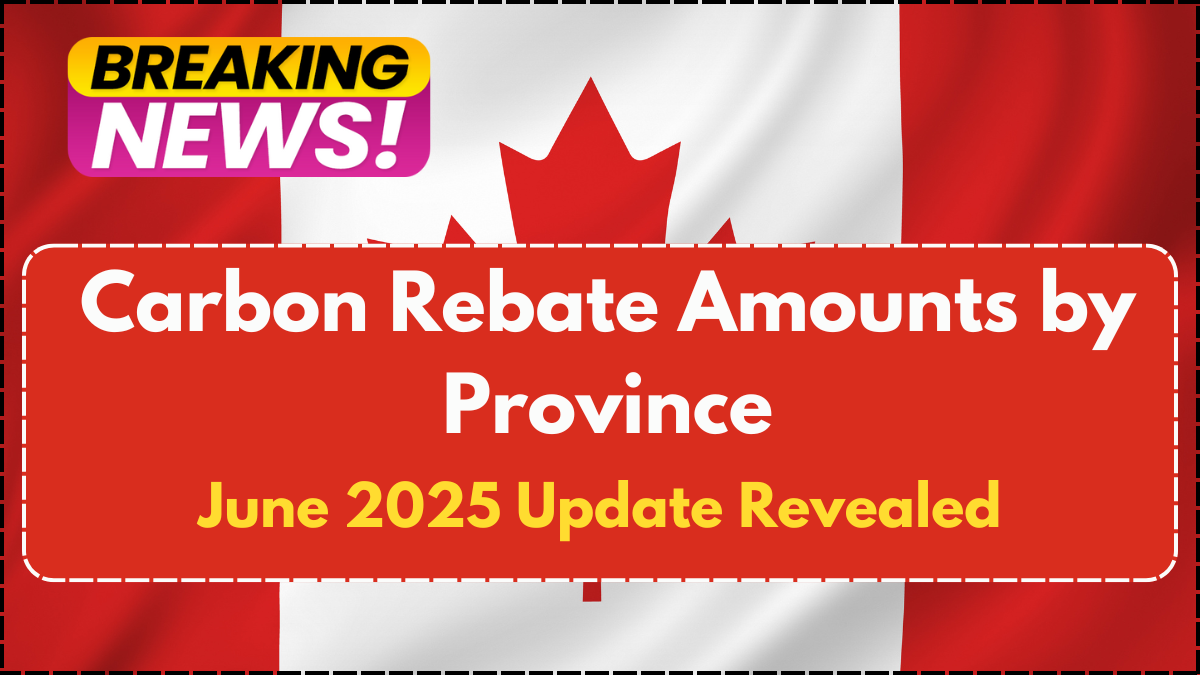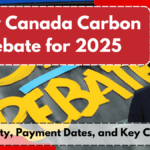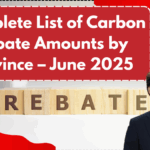With the arrival of June 2025, Canadians in provinces under the federal carbon pricing system can expect the latest quarterly installment of the Climate Action Incentive Payment (CAIP), commonly referred to as the carbon rebate. This financial relief aims to offset the costs associated with carbon pollution pricing, returning proceeds directly to eligible households. The rebate varies significantly based on location, family size, and other eligibility factors, making it crucial for residents to stay informed about provincial differences.

How Carbon Rebates Work in Canada
The federal carbon rebate is issued every quarter to residents in provinces where the federal fuel charge applies. As of May 2025, this includes Alberta, Saskatchewan, Manitoba, Ontario, New Brunswick, Nova Scotia, Prince Edward Island, and Newfoundland and Labrador. Quebec and British Columbia manage their own systems and are not part of the federal program.
Payments are automatically issued through the Canada Revenue Agency (CRA), provided that individuals have filed their income taxes. The rebate is tax-free and does not affect other federal benefits. The quarterly disbursements are made in January, April, July, and October. The June 2025 update pertains to the payment scheduled for July 2025, which is based on current carbon pricing and adjusted annually for inflation and other policy considerations.
June 2025 Carbon Rebate Amounts by Province and Family Size
The following table outlines the CAIP amounts for the July 2025 payment, based on information available as of May 2025. Amounts shown are for a single adult, with additional increments for a spouse or common-law partner and up to two children.
| Province | Individual | Couple | Family of 4 |
|---|---|---|---|
| Alberta | $225 | $337.50 | $450 |
| Saskatchewan | $188 | $282 | $376 |
| Manitoba | $176 | $264 | $352 |
| Ontario | $140 | $210 | $280 |
| New Brunswick | $95 | $142.50 | $190 |
| Nova Scotia | $103 | $154.50 | $206 |
| Prince Edward Island | $99 | $148.50 | $198 |
| Newfoundland & Labrador | $121 | $181.50 | $242 |
These amounts are scaled based on a standard household composition. Additional children result in smaller supplementary payments. Rural residents in eligible areas may receive a 10% top-up to account for higher transportation and heating costs.
Key Changes in 2025 and What They Mean for You
As of the May 2025 policy review, the federal government has confirmed that rebate values will continue to rise annually, in line with the increasing carbon price. For 2025, the carbon price rose to $80 per tonne, up from $65 in 2023. This has directly impacted rebate amounts, particularly in provinces where fuel consumption per capita is higher.
Also new for 2025 is an enhanced communication effort by the CRA to notify households of upcoming payments. Many taxpayers can now expect advance email or text notifications when rebates are processed, reducing uncertainty around timing. However, individuals who haven’t filed their 2024 tax return by May 1, 2025, may see their July payment delayed.
Additional Support for Rural and Remote Communities
A consistent critique of the carbon pricing program has been its disproportionate impact on rural residents. Recognizing this, the federal government continues to offer a 10% rural supplement for those living outside census metropolitan areas. This applies automatically if your postal code is eligible and does not require a separate application.
Remote and Indigenous communities also receive targeted support through federal and provincial initiatives aimed at improving access to clean energy and reducing reliance on diesel. While not directly part of the CAIP, these programs work alongside the rebate to reduce overall energy burdens.
Conclusion
The June 2025 carbon rebate update provides critical insight into how carbon pricing revenues are returned to Canadians. While the amounts vary by province, the overall goal remains to make pollution pricing fair and efficient. With rising rebate amounts and new outreach measures in place, most households will continue to see tangible financial benefits. Staying informed and up-to-date with tax filings remains essential to ensure you receive your full share of the rebate.
FAQ
What is the carbon rebate?
The carbon rebate, or Climate Action Incentive Payment (CAIP), is a tax-free amount paid quarterly to households in provinces under the federal carbon pricing system to offset fuel charge costs.
Who is eligible for the carbon rebate?
To be eligible, you must live in a province where the federal fuel charge applies and file an annual income tax return. The payment is automatic if eligibility is met.
When will I receive the next rebate?
The next rebate will be issued in July 2025. To receive it, ensure your 2024 taxes were filed by May 1, 2025.
Is there a rural supplement?
Yes, a 10% supplement is added for residents in rural and small communities to reflect higher energy costs.
Do children qualify for the rebate?
Yes, up to two children are included in the base rebate calculation. Additional children may qualify for smaller supplemental amounts.
Click here to know more.

